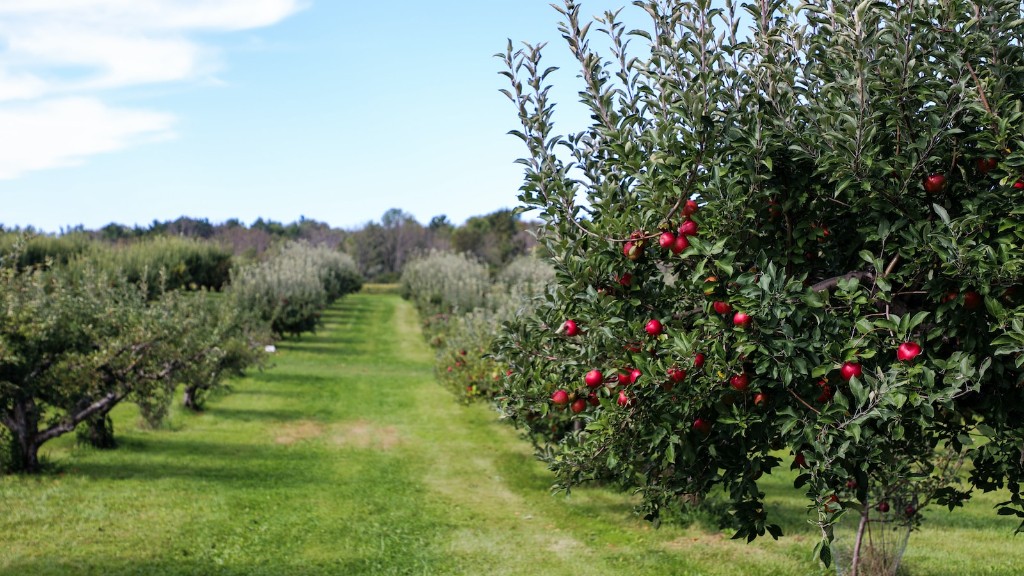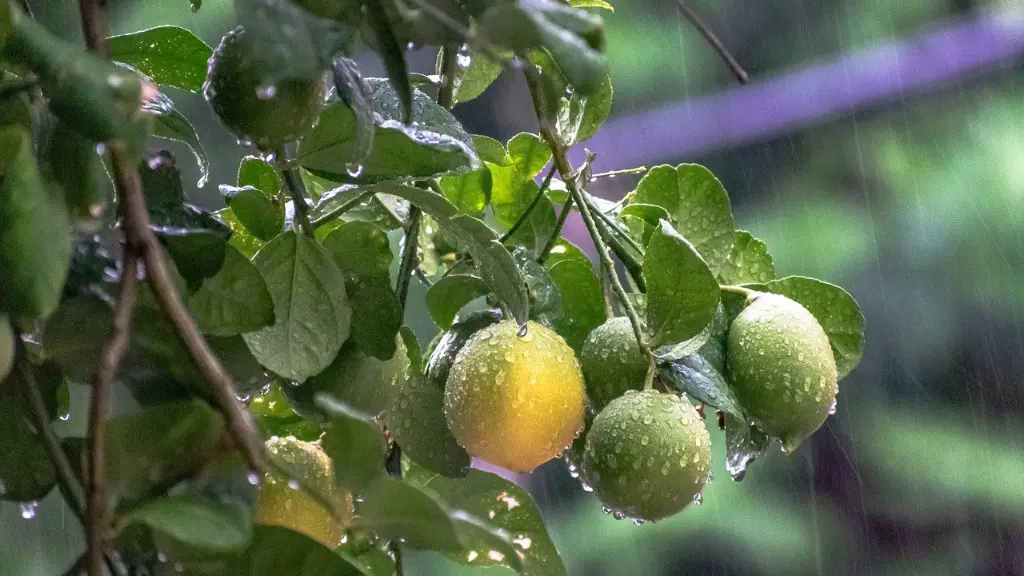Saving frost-damaged lemon trees is a challenging but achievable task for anyone willing to put in the time and effort. Begin by assessing the degree of frost damage. If the leaves of the lemon tree are dry, withered, and blackened, then the damage is more severe. If they appear merely wilted, then the damage may not be as severe. Once you have determined the degree of damage, you can move onto the next step.
The second step in saving a frost-damaged lemon tree is to prune away any damaged branches. This includes removing any dead and dying sections, as well as frost-killed wood. Once this has been done, use a soil test to determine the pH and nutrient levels of the soil. If these have been impacted by the frost damage, then you may need to amend the soil with fertilizer or additional soil conditioner.
Step three is to provide some protection during the cold winter months. This can include fencing off the tree so that it is not exposed to wind and snow, and providing some form of insulation against the cold temperatures. Covering the lemon tree with a tarp, blanket, or old sheet can be effective, just ensure it is secured to the ground and trunk of the tree.
The fourth step is to apply a thick layer of mulch around the root system of the lemon tree, which will help protect it from the cold and conserve soil moisture. Additionally, limit the size of pruning and thinning operations during winter months, as the loss of foliage and branches can put the tree under additional stress. You may also want to water the lemon tree if the soil moisture level drops below 10%, as this too can be a form of stress.
The fifth step is to keep an eye on the lemon tree throughout winter and watch for any signs of further damage or disease. If any are present, then seek immediate advice from a qualified tree specialist. Lastly, be sure to fertilize regularly during the spring and summer months, as this will help the lemon tree recover the nutrients that were lost due to the frost damage.
How to Monitor a Frost-Damaged Lemon Tree
Monitoring a frost-damaged lemon tree is essential to ensure that it has fully recovered. Firstly, check the leaves and foliage on a regular basis to ensure they are growing back as normal and not becoming discolored or wilted. Additionally, monitor the branches and trunk for any signs of fungal or bacterial diseases, which can be caused by the cold winters. If any are present, seek immediate advice from a qualified tree specialist or arborist.
Secondly, keep a watchful eye for any pests that may be infesting the lemon tree. These can include aphids, mites, and mealybugs, which can damage the tree’s foliage and fruit. Lastly, determine the soil’s pH and nutrient levels by doing a soil test every few months. These readings should be compared to the original readings made prior to the frost damage, as this will help you understand the plant’s overall health.
How to Help a Frost-Damaged Lemon Tree Recover
To help a frost-damaged lemon tree recover, you will need to take a few extra steps. Firstly, provide adequate sunlight and moisture, as both are essential for a healthy tree. Water your lemon tree on a regular basis and ensure it gets an adequate supply of sunlight. Secondly, fertilize the tree, as this will help it recover the nutrients lost due to the frost damage.
Thirdly, ensure the soil has good drainage and is kept moist but not soggy, as this can lead to root rot. Additionally, keep your lemon tree pruned to promote healthy growth and to remove any damaged, damaged branches. Lastly, use a fungicide or horticultural oil to rid the tree of any fungal infections and prevent them from returning.
How to Prevent Further Frost Damage to a Lemon Tree
The best way to prevent further frost damage to a lemon tree is to take proactive steps. Firstly, ensure the tree is planted in a sunny and sheltered location, as this will help protect it from the cold winter winds and snowfall. Secondly, mulch around the root system and use a tarp, blanket, or sheet to cover the tree during particularly cold winter nights.
Thirdly, prune away any damaged or dead branches and thin the tree of its foliage in the late fall. This will help reduce the amount of damage the tree will sustain in the event of a heavy frost. Lastly, use a soil test to determine the pH and nutrient levels of the soil, then adjust as necessary with fertilizer or conditioner.
How to Care for a Frost-Damaged Lemon Tree
Caring for a frost-damaged lemon tree is essential for its proper recovery. Firstly, water it regularly and ensure it is getting an adequate supply of sunlight. Secondly, mulch around the root system to help protect it from cold weather and conserve soil moisture. Additionally, limit the size of pruning and thinning operations, as these can put the tree under additional stress.
Thirdly, fertilize the tree regularly to help it recover the nutrients lost due to the frost damage. Lastly, monitor the tree for any signs of further damage or disease, and if present seek immediate advice from a qualified tree specialist or arborist. With the proper care and attention, a frost-damaged lemon tree can make a full recovery.


